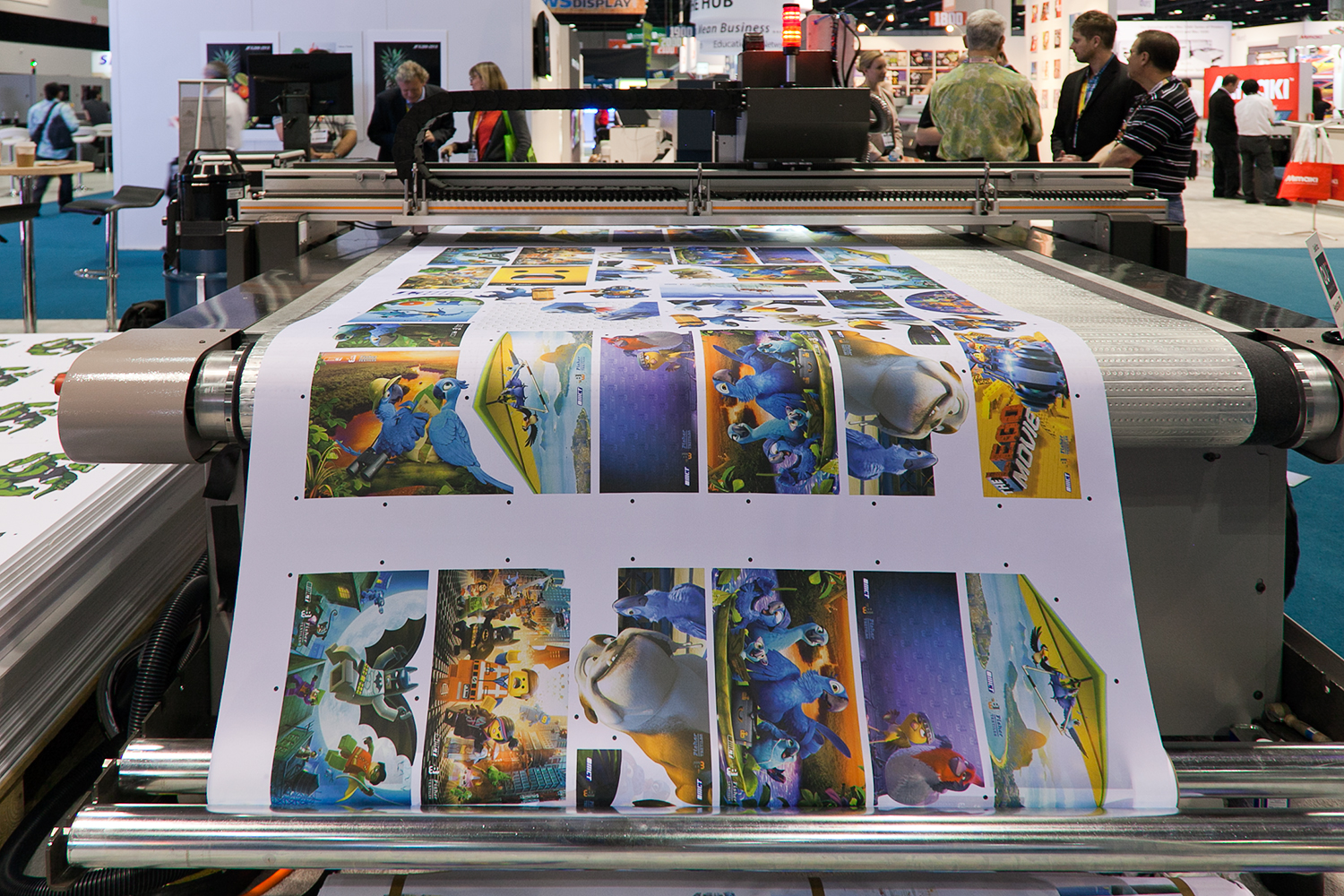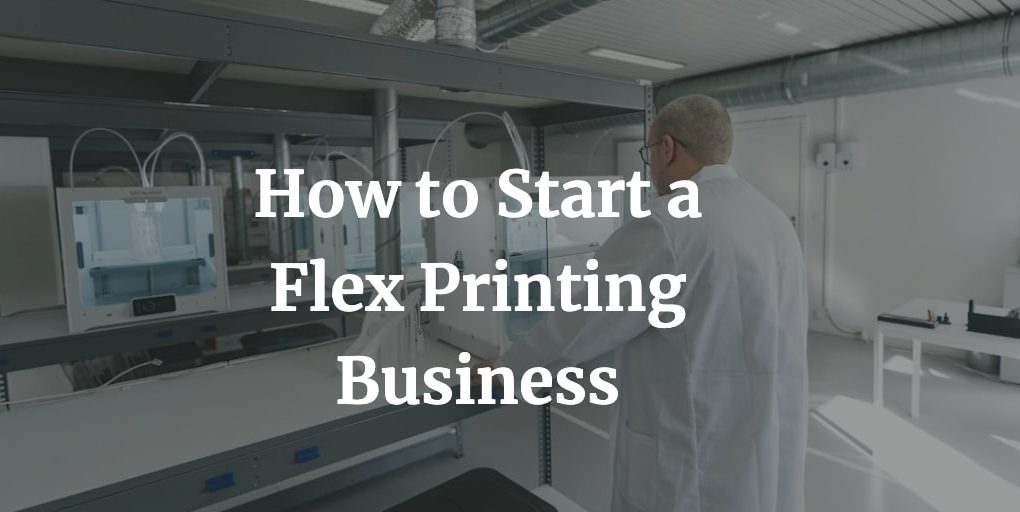Flex printing is a prominent segment of the printing industry. It offers lucrative opportunities for entrepreneurs looking to venture into the realm of visual communication and advertising. As the demand for high-quality, cost-effective printing solutions is on the rise, starting a flex printing business in India can be a rewarding venture. Here is a step-by-step guide to establishing a successful flex printing business.
Table of Contents
What is Flex Printing?
Flex printing is also known as digital flex printing or vinyl printing. It is a popular printing technique used to produce high-quality, large-format prints on flexible materials such as PVC (polyvinyl chloride) vinyl sheets. The printing process involves the use of digital printing technology to transfer colourful graphics, text, and images onto the surface of the flexible substrate, creating vibrant and visually appealing displays.
Flex printing is widely used for various indoor and outdoor advertising applications. It includes banners, billboards, posters, signage, hoardings, vehicle wraps, exhibition displays, and promotional materials. Flex printing offers versatility, cost-effectiveness, and quick turnaround times compared to traditional printing methods, making it a preferred choice for businesses, event organizers, retailers, and advertisers seeking impactful visual communication solutions.
How Flex Printing Works?
The process of flex printing typically involves the following steps:
- Artwork Design: Graphic designers create digital artwork or graphics using specialized software, ensuring that the design meets the client’s specifications and requirements.
- Printing Preparation: The designed artwork is then prepared for printing, including colour calibration, image resizing, and layout adjustments, to optimize print quality and consistency.
- Printing: The prepared artwork is digitally printed onto the surface of the flexible PVC vinyl sheet using large-format inkjet printers equipped with eco-solvent or UV-curable inks. The ink is cured or dried instantly using UV lamps, ensuring fast drying times and smudge-resistant prints.
- Finishing: Once printed, the flex material may undergo additional finishing processes such as lamination, trimming, welding, or grommet installation to enhance durability, weather resistance, and ease of installation.
- Installation: The printed flex material is then installed or mounted at the desired location, whether indoors or outdoors, using various mounting hardware or adhesive solutions.
Is Flex Printing Business Profitable?
The flex and banner market is growing all across the world rapidly nowadays. Additionally, the item is the most popular tool for any type of outdoor and as well as indoor advertising.
Some of the most potential consumers are regional and national political parties. They use banners in almost every program and rally. Additionally, companies operating in several industries use banners for various purposes. Apart from digital signage, flex is the only instrument for outdoor media advertising. Furthermore, every school, educational institution, and sports organization uses flex banners in almost every event. Additionally, there is a good domestic market also.
Nowadays, people use flex banners in events including birthday parties or social gatherings. Therefore, the flex printing business has the potential market for new entrepreneurs.
12 Steps to Start a Flex Printing Business

1. Do Market Research
Before diving into the flex printing business, conduct thorough market research to understand the demand, competition, and market trends. Identify your target audience, including potential clients such as businesses, event organizers, advertising agencies, and individuals seeking promotional materials.
2. Create a Business Plan
Craft a flex printing business plan. If you can’t do this on your own, get help from the experts. It is important to figure out your capabilities including skill and finance.
Do remember, that this business plan document will work as a road map for the future activities of the flex printing company. Some of the basic chapters of your flex printing business plan document must include the cost and investment of the project, operational plan, manpower plan, and financial, and promotional plan.
3. Select a Location
Secure the space for the business. If you want to start the business from a single point, then you must select the space carefully. The location must attract a wide audience. Additionally, you must have specific areas for customer desks, designing, and printing purposes.
4. Obtain Necessary Licenses and Permits
The next step is to ensure compliance with regulatory requirements by obtaining the necessary licenses and permits to operate a printing business in India. This may include GST registration, trade licenses, environmental clearances, and any other local or state-specific permits required in your area of operation.
Related: How to Register a Company/ Startup in India
5. Arrange Funding
You must secure adequate funding for setting up and expanding your flex printing business. Explore various funding options such as bank loans, government schemes, venture capital, angel investors, or crowdfunding platforms to finance your equipment purchases, infrastructure development, working capital needs, and marketing initiatives.
6. Set Up Your Production Facility
Establish a production facility equipped with the necessary infrastructure and equipment for flex printing operations. Invest in high-quality flex printing machines, digital printers, cutting plotters, laminators, heat presses, and other essential tools to ensure efficient and reliable production.
7. Source High-Quality Materials
You need to partner with reputable suppliers to source high-quality flex materials, inks, substrates, and other printing consumables. Choose materials that are durable, weather-resistant, and compatible with digital printing technologies to deliver superior print quality and longevity.
Read: Top Small Manufacturing Business Ideas
8. Offer a Wide Range of Services
Diversify your service offerings to cater to diverse customer needs and preferences. Provide services such as banner printing, signage production, vehicle wraps, exhibition displays, promotional materials, and customized printing solutions to attract a broader clientele.
9. Purchase the Machinery
Several different types of flex printing machines are available in the market. However, according to your specific needs, you must choose the right machine. You must consider the quality and quantity you want from the machine.
Additionally, some machines allow printing on various surfaces. It includes wood, MDF boards, etc. Generally, you will need to have to print and cut the machine. Purchase an upgraded computer with a normal printer. A printer is essential to get the looks of the final design. Procure the necessary software.
10. Hire and Train Staff
Build a skilled workforce by hiring experienced graphic designers, printing technicians, and sales professionals with expertise in the printing industry. Provide comprehensive training programs to ensure proficiency in operating printing equipment, designing artwork, and delivering exceptional customer service.
11. Develop a Strong Brand Identity:
Build a strong brand identity for your flex printing business through effective branding, marketing, and customer engagement strategies. Create a professional website, develop marketing collaterals, and establish a presence on social media platforms to showcase your portfolio, attract clients, and build credibility in the market.
12. Build Relationships and Network
Foster strong relationships with clients, suppliers, industry associations, and business partners to expand your network and foster collaboration opportunities. Participate in trade shows, industry events, and networking forums to stay updated on industry trends, forge new connections, and promote your flex printing services.
Read: How to Start a Screen Printing Business
Frequently Asked Questions
What is the cost of starting a flex printing business?
The approximate cost of launching a flex printing business on a small scale will be in the range of Rs. 10 Lacs to Rs. 20 Lacs in India.
What is the difference between flex printing and other printing methods?
Flex printing utilizes digital printing technology to produce large-format prints on flexible PVC vinyl sheets, offering vibrant colours, high-resolution graphics, and quick turnaround times. In contrast, traditional printing methods like screen printing involve a more labour-intensive process and are typically used for smaller print runs or specialized applications.
What types of materials can be used for flex printing?
Flex printing is commonly done on PVC (polyvinyl chloride) vinyl sheets due to their flexibility, durability, and weather resistance. However, other materials such as fabric, canvas, mesh, and adhesive vinyl may also be used depending on the specific application and desired outcome.
How long does a flex print last?
The durability of a flex print depends on various factors such as the quality of materials used, exposure to environmental conditions (e.g., sunlight, rain), and proper installation techniques. Typically, well-maintained flex prints can last anywhere from one to five years or more, especially when used for indoor applications.
Can flex prints be used for outdoor advertising?
Yes, flex prints are suitable for outdoor advertising applications such as banners, billboards, hoardings, and signage. PVC vinyl material used in flex printing is weather-resistant, UV-resistant, and durable, making it ideal for withstanding exposure to sunlight, rain, wind, and other outdoor elements.
What are the key factors to consider when starting a flex printing business?
Key factors to consider when starting a flex printing business include market research, equipment investment, material sourcing, pricing strategy, competition analysis, marketing and sales efforts, regulatory compliance, and customer service. It’s essential to develop a comprehensive business plan and budget to guide your business operations and growth.
Are there any environmental considerations associated with flex printing?
While PVC vinyl material used in flex printing is durable and weather-resistant, it is not biodegradable and can pose environmental challenges if not disposed of properly. Consider implementing sustainable practices such as recycling waste materials, using eco-friendly inks and substrates, and educating clients on responsible disposal methods to minimize environmental impact.
Discover more from NEXTWHATBUSINESS
Subscribe to get the latest posts sent to your email.



